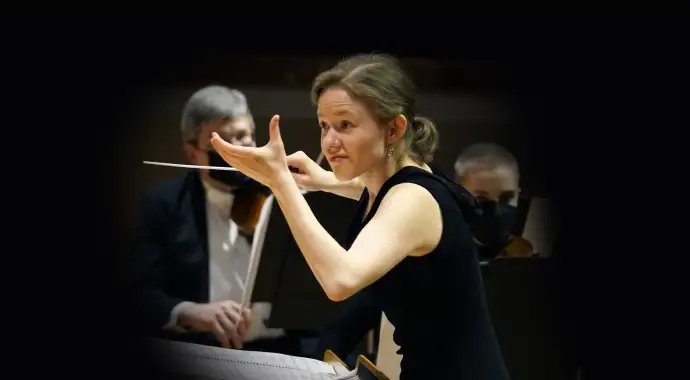
The CEO and a Symphony Conductor: Orchestrating Success
Recently I attended the symphony and was enamored by the conductor. With a clear understanding of what the composure intended from the music, he acrobatically and with great expression inspired each section of the orchestra to deliver on this vision.
A CEO role is very much the same as a symphony conductor. Both positions require a unique blend of vision, leadership, and the ability to bring together diverse talents to create something remarkable. While the comparison may seem abstract initially, a closer examination reveals interesting similarities in how CEOs and conductors lead and shape their teams to achieve success. Below are the similarities.
Vision and Direction: Just as a symphony conductor starts with a clear interpretation of the composer’s vision, a CEO must have a well-defined vision for the company. A CEO sets the strategic direction, outlining goals and objectives that align with the company’s mission. Similarly, a conductor interprets the composer’s intentions, deciding on the tempo, dynamics, and phrasing that will bring the music to life. Both leaders use their vision to guide their teams toward a unified goal.
Leadership and Inspiration: A CEO and a conductor must inspire and motivate their teams to perform at their best. A CEO inspires employees by providing a compelling vision, fostering a positive work culture, and leading by example. Similarly, a conductor motivates musicians by instilling a sense of passion, unity, and excellence. Through their leadership, both leaders ignite the collective energy and commitment needed to achieve outstanding results.
Collaboration and Teamwork: Just as an orchestra consists of diverse instrumentalists, a company comprises individuals with unique skills and expertise. A CEO must combine these diverse talents like a conductor to create a harmonious and effective team. Both leaders understand the importance of collaboration and teamwork, ensuring everyone contributes their best while balancing individual expression and collective cohesion.
Communication and Coordination: Communication is crucial in the business world and the symphony orchestra. A CEO clearly and consistently communicates the company’s vision, strategy, and expectations clearly and consistently to employees, investors, and stakeholders. Similarly, a conductor conveys their interpretation and direction to the orchestra through gestures, expressions, and rehearsals. Both leaders must coordinate their teams, ensuring everyone is aligned, informed, and working towards a common purpose.
Adaptability and Decision-making: CEOs and conductors face unexpected challenges and must make critical real-time decisions. A CEO must adapt to changing market conditions, evolving technologies, and unforeseen obstacles, making strategic decisions to keep the company on track. Similarly, a conductor adjusts their interpretation during a live performance based on the ensemble’s response and unforeseen circumstances. Both leaders can think on their feet, make tough decisions, and navigate through uncertainty.
The comparison between a CEO and a symphony conductor highlights the remarkable parallels in their roles as leaders, visionaries, and collaborators. Both require a deep understanding of their respective fields, the ability to inspire and motivate others, and the skill to bring together diverse talents to achieve extraordinary outcomes. By embracing the qualities of a symphony conductor, CEOs can harness the power of harmony, creativity, and collective excellence, propelling their organizations toward unparalleled success.